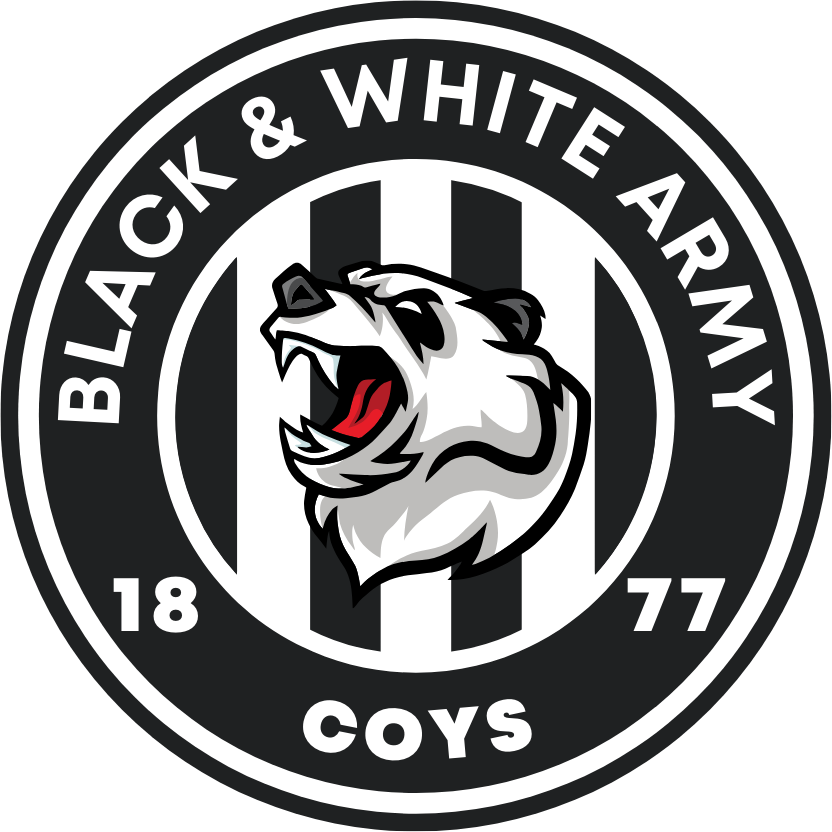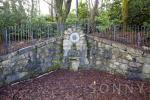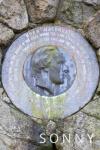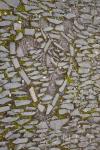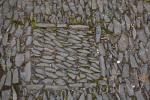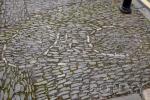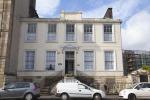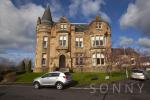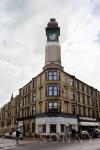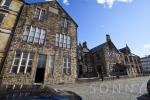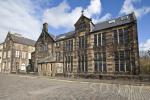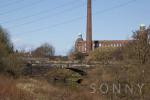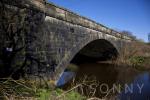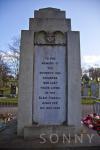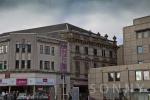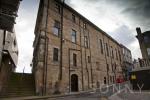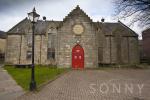-
Posts
5,177 -
Joined
-
Last visited
-
Days Won
50
Content Type
Profiles
Forums
Events
Store
Everything posted by Sonny
-

Paisley - My Pics Of Old Or Unusual Buildings Or Places Of Interest.
Sonny replied to Sonny's topic in General Nonsense
No bother slartibardfast. I havent really inspected the complete building. just general external shots so where is the stone with the date on it? Here is a bigger pic of the Bonnie Wee Well. It is dedicated to Hugh MacDonald the Glasgow poet. Biography as follows - Hugh MacDonald 1817 - 1860 Author, poet, naturalist and chartist. Born in Bridgeton (Glasgow), MacDonald was the eldest of eleven children. He began work as an apprentice block engraver at the Barrowfield calico-printing works. His early experiences brought him into sympathy with the Chartist movement. He wrote articles on social and political issues and was appointed to the Glasgow Citizen newspaper, rising to become a Sub-Editor. He is perhaps best remembered for his Rambles Round Glasgow, first published 1854. These described walks taken by himself and his friends around Glasgow and were replete with observations of the countryside and the natural world. Some of these walks are now way-marked in Gleniffer Braes Country Park. MacDonald lies buried in the Southern Necropolis and is commemorated by a fountain in Glasgow Green known as the Bonnie Wee Well. MacDonald had described Glasgow Green in his Rambles as a "spacious and beautiful public park, with wide-spreading lawns, picturesque groups of trees, far-winding walks, numerous delicious springs, and, above all, a rich command of scenery." McDonald’s ‘Bonnie Wee Well’ has always attracted large numbers of visitors, young and old alike enjoying the fine views and the fresh air to be had at the top of the Braes. The original memorial to him was therefore set on the Braes by the Glasgow Ramblers Club, but due to several instances of vandalism they removed it to a new site on Glasgow Green. MacDonald’s Paisley admirers, headed by the ‘Old Weavers Society’, thereupon got together to pay for a new memorial. It was unveiled by Robert Cochran, Treasurer of the Council, in 1883. The inscription on the Well is verse 4 from his poem The Bonnie Wee Well - The bonnie wee well on the breist o’ the brae, Where the hare steals to drink in the gloamin’ sae gray, Where the wild moorlan’ birds dip their nebs and tak’ wing, And the lark weets his whistle ere mounting to sing. MacDonald was a great fan of Robert Tannahill and this poem was dedicated to Tannahill. -

Paisley - My Pics Of Old Or Unusual Buildings Or Places Of Interest.
Sonny replied to Sonny's topic in General Nonsense
You should be a poet Eddy -

Paisley - My Pics Of Old Or Unusual Buildings Or Places Of Interest.
Sonny replied to Sonny's topic in General Nonsense
Cant say I do Rick. I remember going to this place every Easter as a kid (walking from the West End) and it was very busy with us kids rolling our painted eggs. Seemed very exciting at the time with loads of folk walking up and down the hill. Only after the rolling of the eggs did we have our picnic (or pieces as we called them). -

Paisley - My Pics Of Old Or Unusual Buildings Or Places Of Interest.
Sonny replied to Sonny's topic in General Nonsense
You are all getting too good at recognising the buildings/places of interest so I'll use more clues.... This is an easy one even with a clue.... PICTURE 33 -

Paisley - My Pics Of Old Or Unusual Buildings Or Places Of Interest.
Sonny replied to Sonny's topic in General Nonsense
I stayed in the West End and my family always came along Wellmeadow and along the High St into town but one day my Mother took us up Oakshaw to show us these cobble stones. I remember being a bit overawed at the beautiful buildings and surroundings of Oakshaw which was so close to the tenements of Well St but a different world. Ooops - did I give the game away there? -

Paisley - My Pics Of Old Or Unusual Buildings Or Places Of Interest.
Sonny replied to Sonny's topic in General Nonsense
Probably not Eddy but am sure it brings back memories for many. And who knows maybe there is someone here who doesnt know about this? -

Paisley - My Pics Of Old Or Unusual Buildings Or Places Of Interest.
Sonny replied to Sonny's topic in General Nonsense
PICTURE 31 correctly identified by HSS as 5 George Place. Built in the early 1800s and is B listed. Originally a merchant's house but I do not have any further details. Now used for various activities including the Happy Church, Trophy Centre, and Jewellery Repairs. PICTURE 32 is in fact three related images. Many pages back someone asked about them so this is for you -

Paisley - My Pics Of Old Or Unusual Buildings Or Places Of Interest.
Sonny replied to Sonny's topic in General Nonsense
What happened to the pupils of St Mirin's & St Margarets when the school closed? Pod has very eloquently told you all you need to know about PICTURE 30 - St Margaret's (no connection to the School), the mansion opposite Brodie Park. PICTURE 31 is -

Paisley - My Pics Of Old Or Unusual Buildings Or Places Of Interest.
Sonny replied to Sonny's topic in General Nonsense
Thanks Billy. We need hundreds. There should be a plaque on every Building that has some historical significance to Paisley so that a walk around the town is an education and appreciation of our past. Considering how much money local government waste its not too much to ask. Developers should have a remit when they renovate a building they insert a plaque about its significance on the outside for the public to see. This town is a walking museum full of history and most Buddies know little about it. -

Paisley - My Pics Of Old Or Unusual Buildings Or Places Of Interest.
Sonny replied to Sonny's topic in General Nonsense
Picture 29 is indeed the South Side/End Clock. However in my limited investigations I can find no information on it. FS reckons it was built by Ikea but I dont know whether to take him seriously. So if anyone knows anything about this significant landmark for all Southerners please post! PICTURE 30 attached........ -

Paisley - My Pics Of Old Or Unusual Buildings Or Places Of Interest.
Sonny replied to Sonny's topic in General Nonsense
No saintargyll. Been a while since I have been in Morar Dr. Maybe someone else has been inspired to photograph Paisley -

Paisley - My Pics Of Old Or Unusual Buildings Or Places Of Interest.
Sonny replied to Sonny's topic in General Nonsense
That's a possibility Slash and I may do that. I have been thinking that I may try to publish a book of the photos with a brief paragraph outlining the significance of each picture. Dont know how much interest there would be though. At the moment I have probably another 200 shots (at least!) still to put up on here and some more I have in mind so this thread will run for a while yet. -

Paisley - My Pics Of Old Or Unusual Buildings Or Places Of Interest.
Sonny replied to Sonny's topic in General Nonsense
-

Paisley - My Pics Of Old Or Unusual Buildings Or Places Of Interest.
Sonny replied to Sonny's topic in General Nonsense
PICTURE 28 is the Cathedral House and St Mirin's Old Academy. The Old Academy was built in 1893 and the extensions in 1905 and 1912. C Listed. The core of the Academy was built to serve as the convent school for the Faithful Companion of Jesus for Canon Chisholm. Lamb (1872-1910). The architect was James Barr Lamb who came from a family of local architects. The building incorporates to the rear at ground and basement the wall of the previous building on the site, the Union Lodge. The 1912 extension was commissioned by Archbishop Maguire. It now serves as the parish halls for the neighbouring St Mirin's Cathedral. Another photo attached of this building. Anyone been in it? Whats it like? -

Paisley - My Pics Of Old Or Unusual Buildings Or Places Of Interest.
Sonny replied to Sonny's topic in General Nonsense
Cheers Slash. Many memories. Wouldnt think twice about walking from the bottom of Well St out to the Kelburne and back. Remember doing it with my old man one Hogmany so my Mother could get the house 'clean' for the Bells. I would be about 7 and we went to see Jason and the Argonauts and it was pitch black and baltic on that walk. Pity that old house next to the ABC was pulled down. The Council in the 60's should be prosecuted for crimes against architecture. -

Paisley - My Pics Of Old Or Unusual Buildings Or Places Of Interest.
Sonny replied to Sonny's topic in General Nonsense
Carbrook St was my Primary. Pulled down years ago and cannot find a photo of it. Has anyone got one? -

Paisley - My Pics Of Old Or Unusual Buildings Or Places Of Interest.
Sonny replied to Sonny's topic in General Nonsense
-

Paisley - My Pics Of Old Or Unusual Buildings Or Places Of Interest.
Sonny replied to Sonny's topic in General Nonsense
Well several of you identified PICTURE 27 as the Blackhall Railway Viaduct over the White Cart. Well done. I thought you may struggle with this image. Built by the late, great, Thomas Telford in 1806-1809. Built as a canal aquaduct, Single span of about 100 feet. Built for Glasgow, Paisley and Johnstone Canal which was closed in 1881 and converted into railway. As FS stated it is the oldest railway bridge in the world built by probably the best bridge builder who ever lived. More info on Thomas Telford here...... http://en.wikipedia..../Thomas_Telford I have posted another shot that may help you to place it better. PICTURE 27B. The Bridge can be accessed via the Jenny's Well Nature Path. Two things disappointed me. One is that there is no plaque on or near it identifying it and two the path does not go right up to the Bridge. I had to cut across rough ground full of brambles to get near it. Good image by flyingscot shows exactly where it is. Note that some ground at the Nature reserve is now football pitches and used by St Mirren Youth (ages 7-12 and girls teams). There is a good viewing platform from where 27B was taken. When taking the path along Jenny's Well I bumped into four dog walkers who all lived locally. None of them had a clue about this great bridge or other amazing buildings close by. Maybe Paisley schools should teach a little about Paisley history . A pleasant hour's stroll around the reserve on a fine day (you can also cycle around it). -

Paisley - My Pics Of Old Or Unusual Buildings Or Places Of Interest.
Sonny replied to Sonny's topic in General Nonsense
To be honest Slash the more I have been taking the photos and trying to get a little history on them the more I have become very impressed with Paisley. It must have been one of the richest towns in the country at one point if not the richest. The benefactors were amazing and what they left is probably relatively unsurpassed anywhere in Scotland (even Dunfermline with Carnegie) as Coates and Clark seemed to be having a competition as to who could give the most. Remember at one point they were in direct competition in the same town and they owned the two largest cotton mills in the world. The history of the Weavers is something else altogether. And the number of mansions I have come across has been far more than I imagined. There have been many great and generous Buddies and their influence is everywhere in the town even if we dont normally recognise it. I was born and brought up in the West End but probably have a far greater appreciation of the place now than I have ever done. I have come across places I did not know existed (eg Picture 27 - this A listed bridge) and discovered significance in things I took for granted (eg Burtons). Good to be a Buddie. -

Paisley - My Pics Of Old Or Unusual Buildings Or Places Of Interest.
Sonny replied to Sonny's topic in General Nonsense
Close, but it doesnt carry Hawkhead Rd. -

Paisley - My Pics Of Old Or Unusual Buildings Or Places Of Interest.
Sonny replied to Sonny's topic in General Nonsense
Today's A Listed building may surprise a few of you. Does anyone know anything about it (without looking it up)? PICTURE 27 -

Paisley - My Pics Of Old Or Unusual Buildings Or Places Of Interest.
Sonny replied to Sonny's topic in General Nonsense
PICTURE 25 was indeed the Laigh (Low) Church. Some more info here.... History of the Old Laigh Kirk The Town Councillors began wishing for a Parish Church of their own soon after 1730. In 1733, they negotiated the purchase of two tracts of land, Aikett's Yard north of St Mirren’s Burn (now culverted) and Causeyland, or the Meikle Yard south of it, and also two or three houses in Causeyside. The southern part was the wider and this was for the Church. Meanwhile they negotiated with the Earl of Dundonald, patron of the existing Abbey Church, and the existing Presbytery, for leave to 'disjoin' a separate parish. The New Street was laid off in 38 building lots which were auctioned profitably on 15th March 1734. (Some of these lots were afterwards subdivided.) Building of the Church began in 1736 (local masons Young and Hart contracted) from the proceeds. In 1738 the church was open and the rev. Robert Mitchell came from the Abbey, where he had been the second minister (the Abbey, with a huge parish, had two ministers.) Among the 18 elders composing the new Kirk Session were several bailies and other important people. Their minutes show that they worked in close co-operation with the council to enforce the puritanical discipline of the time on the Burgh’s inhabitants. The most famous person associated with this Church was Dr John Witherspoon, the next minister but one after Mitchell. He was a controversialist who tried to enforce the strictest moral standards both nationally and locally, making war on Sabbath-breakers and stage plays as well as on more serious crimes (for which the police force was quite inadequate). By that time some of the richer parishioners were much less willing to be disciplined; and when Witherspoon brought some of them before the Presbytery for blasphemous behaviour (particularly parodying the Communion Service while drunk) they employed a lawyer, got a verdict of Not Proven and then successfully sued the minister for libel because he had printed a sermon denouncing them. Not surprisingly, Witherspoon yielded to the repeated solicitations of his American admirers to go and become the Principal of Princeton. From then on (1768) he became a part of American history; he was one of the signatories of the Declaration of Independence. The development of 1733 was the start of a period of rapid growth in the town. There soon had to be two more Burgh churches serving a High and a Middle Parish and this church was then the Laigh (Low) Church. The burn just north of the churchyard was the parish boundary; George Street and Causeyside were this church’s parish. By the end of the century the congregation was outgrowing the Church, which was in any case old-fashioned and damp. After the Napoleonic Wars it was replaced by St George’s Church, visible at the end of Shuttle Street though now converted into flats. The Old Laigh Kirk remained Burgh property and was available for letting to smaller religious bodies, (Paisley was very tolerant of dissenters so long as they were Protestant), for Sunday Schools, etc, and as a public meeting hall. It was so much appreciated for this last purpose that when the Town Council proposed in 1833 to sell it there was an outcry. Eventually a group of local individuals bought it so as to retain it as a public meeting place. Shortly afterwards the Evangelical Union leased it; this was a body formed in Kilmarnock in 1835 which differed from all the Calvinist churches on some fundamental points of doctrine and had a small but keen membership in Paisley. By the 20th century the the E. U. congregation had moved away, leaving the old church, once again, in the hands of the local authority. In 1987 it was re-opened as an Arts Centre, for which the shape in which the last Church rebuilding had left it was reasonably well adaptable. I'll call these three next shots PICTURE 26A 26B and 26C as they all relate to the same event that has already been covered - The Glen Cinema Disaster (Page 9 of this thread). The fist A shows the memorial in Hawkhead Cemetary, the second B shows the cinema behind and above the furniture shop and C shows the cinema/Good Templar Halls from Dyers Wynd. -

Paisley - My Pics Of Old Or Unusual Buildings Or Places Of Interest.
Sonny replied to Sonny's topic in General Nonsense
-

Paisley - My Pics Of Old Or Unusual Buildings Or Places Of Interest.
Sonny replied to Sonny's topic in General Nonsense
Remember the way things were paid for via these tubes that seemed to be sucked around through pipes? I remember Santa but most of all I remember the cafe and my weekly treat of co-op cola and a cake. Like Insaintee I too remember the 'gent's outfitter' for boys' clothes and school uniforms. Seems like a past life now -

Paisley - My Pics Of Old Or Unusual Buildings Or Places Of Interest.
Sonny replied to Sonny's topic in General Nonsense
No HSS, Camphill. However I seem to remember also competing at Seedhill? For the first time on this thread Bluto you are wrong. 'Toward' were the Athlete Kings
